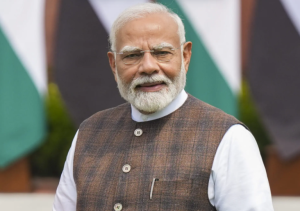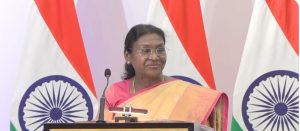The G20 Global Partnership for Financial Inclusion document prepared by World Bank has lauded the transformative impact of Digital Public Infrastructure DPIs in India over the past decade. DPI has a transformative impact on India, extending far beyond inclusive finance. On Financial Inclusion, lauding India’s DPI approach the World Bank document notes that India has achieved in just six years what would have taken about five decades. The document highlighted the groundbreaking measures taken by Modi government and the pivotal role of government policy and regulation in shaping the DPI landscape. It said, Jandhan-Aadhar-Mobile JAM Trinity has propelled financial inclusion rate from 25 per cent in 2008 to over 80 percent of adults in last six years, a journey shortened by up to 47 years, thanks to DPIs. The document categorically notes that while DPIs’ role in this leapfrogging is undoubtable, other ecosystem variables and policies that build on the availability of DPIs were critical.
These included interventions to create a more enabling legal and regulatory framework, national policies to expand account ownership and leveraging Aadhaar for identity verification. It said, since its launch, the number of Pradhan Mantri Jan Dhan Yojana PMJDY accounts opened tripled from 147.2 million in March 2015 to 462 million by June 2022. Women own 56 percent of these accounts, more than 260 million. The document said, Jan Dhan Plus program encourages low-income women to save, resulting in over 12 million women customers as of April 2023 and a 50 percent increase in average balances in just five months, as against the entire portfolio in the same time period. It is estimated that by engaging 100 million low-income women in savings activities, public sector banks in India can attract approximately 25 thousand crore rupees (3.1 billion dollars) in deposits.
It said, in the last decade, India has built one of the world’s largest digital Government-to-People G2P architectures leveraging DPI. This approach has supported transfers amounting to about 361 billion dollars directly to beneficiaries from 53 central government ministries through 312 key schemes. The document said, as of March 2022, this had resulted in a total savings of 33 billion dollars, equivalent to nearly 1.14 percent of GDP. More than 9.41 billion transactions valuing about Rs 14.89 trillion were transacted in May 2023 alone. For the fiscal year 2022-23, the total value of UPI transaction was nearly 50 percent of India’s nominal GDP. The DPI in India has also enhanced efficiency for private organizations through reductions in the complexity, the cost and the time taken for business operations in India.







